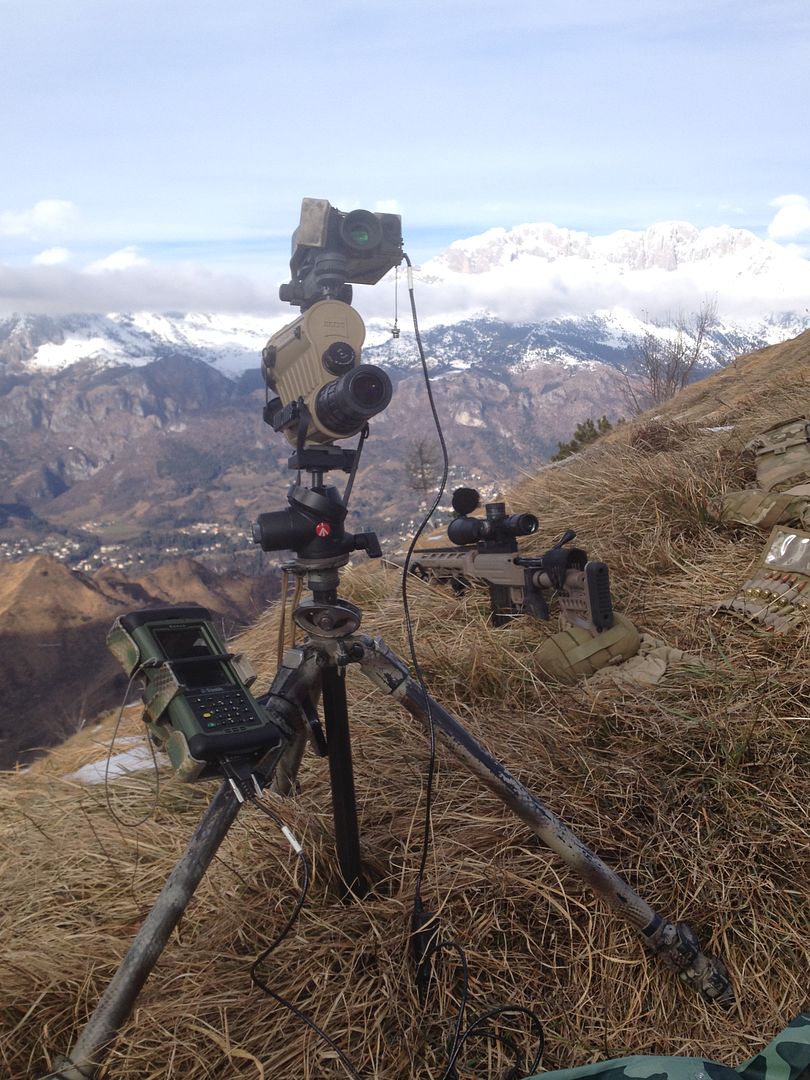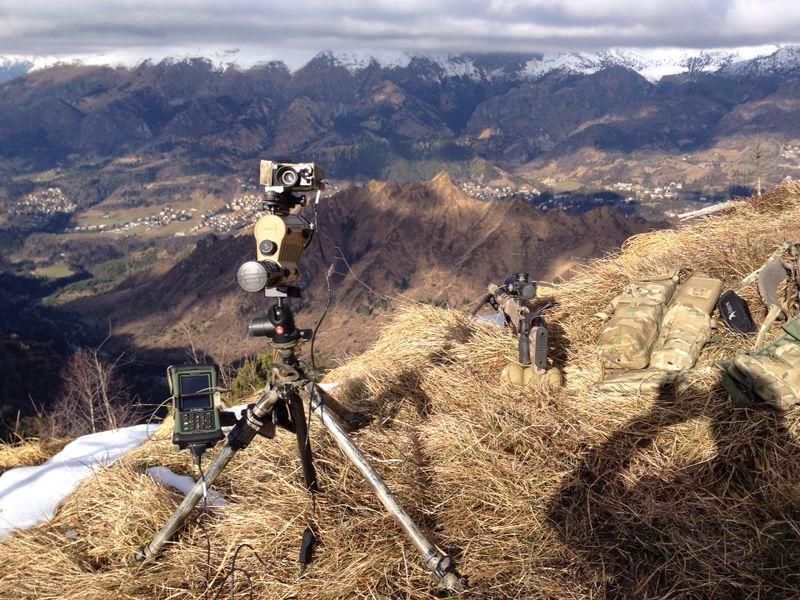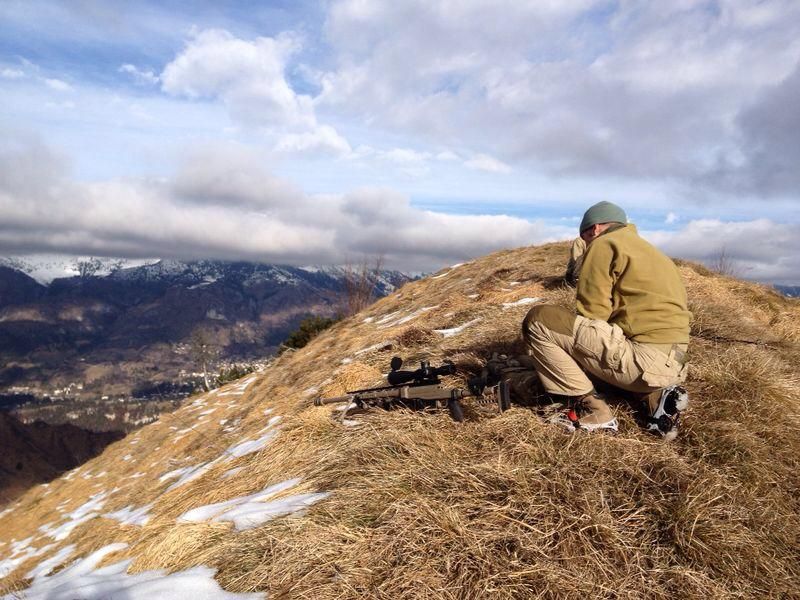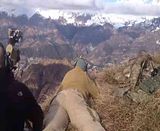I am interested to hear what gear everyone considers essential to successful ELR shooting? I am not talking particularly about which rifle, caliber or scope, but gear such as Kestrel, range finder, ballistic software, etc. It would also be interesting to see minimum recommendations along with optimum recommendations.
Join the Hide community
Get access to live stream, lessons, the post exchange, and chat with other snipers.
Register
Download Gravity Ballistics
Get help to accurately calculate and scope your sniper rifle using real shooting data.

Install the app
How to install the app on iOS
Follow along with the video below to see how to install our site as a web app on your home screen.
Note: This feature may not be available in some browsers.
You are using an out of date browser. It may not display this or other websites correctly.
You should upgrade or use an alternative browser.
You should upgrade or use an alternative browser.
What do you consider the most essential gear for ELR?
- Thread starter nso123
- Start date
I think that a quality rangefinder is most important. It the modern rangefinder than has made accurate ELR shooting possible.
Without a quality rangefinder you can make do with a good GPS to measure your distance practice shooting so long as access to the target is possible.
Next is your rifle and scope system.
The kestrel is a great bit of gear but before I had one I just used the data from my car to get temperature and pressure. It did the job ok.
The more gear you have the better will be your results, but it is surprising how well you can shoot ELR with minimal gear and making do with what you have.
Things like getting your elevation from a topographical map or the temperature from the radio.
Wind values do not require anything fancy, just years of practice ...............
Without a quality rangefinder you can make do with a good GPS to measure your distance practice shooting so long as access to the target is possible.
Next is your rifle and scope system.
The kestrel is a great bit of gear but before I had one I just used the data from my car to get temperature and pressure. It did the job ok.
The more gear you have the better will be your results, but it is surprising how well you can shoot ELR with minimal gear and making do with what you have.
Things like getting your elevation from a topographical map or the temperature from the radio.
Wind values do not require anything fancy, just years of practice ...............
Electronics are cool and great to aid in LRS, but get use to manual ranging. Use your reticle, learn it. I think its fun to go out and just do the math in my head and range. Usually I'll bring out my range finder and double check my math. I've been estimating the height of an object close to the area of my target(a tree, stump, downed tree, width of a logging road), ranging from that guess. Then, the electronic rangefinder comes into play. See how close I actually was. Electronics do fail, dead batteries, burn-out, EMP, impact damage. Knowledge and experience will always be there for you.
Capable LRF.
Plenty of erector travel, and a base with enough forward slope to capitalize on it.
Chambering and bullets up to the distance.
Plenty of erector travel, and a base with enough forward slope to capitalize on it.
Chambering and bullets up to the distance.
Manual Ranging at ELR distances using your reticle, you must be high... you have to a compass and your pace count over meters, triangulation is your only manual method.
Ranging for a reticle is highly limited, run the numbers after 800, or 1000 yards, a decimal place off in the read, and you missed the target.
Reticle ranging is for your personal danger space and not beyond.
The best laser you can afford, a solid non-App Ballistic Program, a Kestrel are all essential.
You ammo should have a ES/SD in the single digits, your load has to be solid.
The shooters needs to have mastered the fundamentals of marksmanship, and the scope has be calibrated.

Inexpensive doesn't cut it ... last Gunsite XLR class we took there were 6 spotter 60s on the line, and everyone had some model Vectronix Laser, the cheapest was the Terrapin.

Ranging for a reticle is highly limited, run the numbers after 800, or 1000 yards, a decimal place off in the read, and you missed the target.
Reticle ranging is for your personal danger space and not beyond.
The best laser you can afford, a solid non-App Ballistic Program, a Kestrel are all essential.
You ammo should have a ES/SD in the single digits, your load has to be solid.
The shooters needs to have mastered the fundamentals of marksmanship, and the scope has be calibrated.

Inexpensive doesn't cut it ... last Gunsite XLR class we took there were 6 spotter 60s on the line, and everyone had some model Vectronix Laser, the cheapest was the Terrapin.

I can't say there is ONE piece of essential gear, what you need is a complete system suited to the desired task. If the task is bang away at rocks way over yonder, you need a lot less stuff than if the task is to fire a single round and hit a torso at 1500m. A recreational shooter may be fine getting ranges with Google Earth or GPS, since no one cares if you walk back and forth to the targets. If you shoot the same place all the time, even a weather meter may become optional, since you probably only shoot in 'nice' weather and it therefore does not fluctuate much.
For a true field sniper, you need quite a lot of kit to be truly operational at ranges in excess of 1200m. Between rifle, ammo, optics, LRF, computer, NV, and misc support equipment, I bring about 80K worth of gear to the range, none of it is optional.
For a true field sniper, you need quite a lot of kit to be truly operational at ranges in excess of 1200m. Between rifle, ammo, optics, LRF, computer, NV, and misc support equipment, I bring about 80K worth of gear to the range, none of it is optional.
I'd say the shooter themself is the biggest factor by far... have you mastered running the rifle with super consistency.
Then I'd say a Vectronix or equivalent to get the correct range, and ammo with low SD/ED, otherwise you'll know the range, but you'll dance all around a mile target as your MV jumps buy 20-30fps from round to round.
Then a good BC model for your bullet at various speed brackets, and a good ballistics app..
Lowlight: what is wrong with Shooter, if it is a app vs a dedicated ballistics solution like FFS.
Then I'd say a Vectronix or equivalent to get the correct range, and ammo with low SD/ED, otherwise you'll know the range, but you'll dance all around a mile target as your MV jumps buy 20-30fps from round to round.
Then a good BC model for your bullet at various speed brackets, and a good ballistics app..
Lowlight: what is wrong with Shooter, if it is a app vs a dedicated ballistics solution like FFS.
During the Gunsite Class, more than one of use were running both FFS and iPhone apps alongside each other. (I do this often)
We found (and they certainly could have fixed it) that after 1500m the iPhone suddenly and without reason stopped working correctly. We had to reset it and stay below 1500m in order to get accurate readings. It match perfectly until this point. This stuff is so subtle and so far away you can blame it on anything when in fact it was the program.
Both of us had the same thing happen, I understand it's a bit blanket and we didn't run all the programs, but when you are spending a few bucks a shot why risk it. It was dead on until we cross beyond 1500m, then it stopped matching up and at the worst was a full mil off.
We found (and they certainly could have fixed it) that after 1500m the iPhone suddenly and without reason stopped working correctly. We had to reset it and stay below 1500m in order to get accurate readings. It match perfectly until this point. This stuff is so subtle and so far away you can blame it on anything when in fact it was the program.
Both of us had the same thing happen, I understand it's a bit blanket and we didn't run all the programs, but when you are spending a few bucks a shot why risk it. It was dead on until we cross beyond 1500m, then it stopped matching up and at the worst was a full mil off.
Fascinating. I think I've seen similar when I was practicing 1 mile plus, and that was with Shooter. That sent me on a hunt for BC broken down by velocity brackets, and fortunately, Lapua (I shoot the 300 Scenar) published some velocity bracketed BCs. But I can't say definitively whether that improved Shooter or not because I stopped shooting that distance thereafter. I found wind effects in our northern california canyons moved round left and right as much as 30 feet from shot to shot, making one mile a silly pursuit for me.
The most essential thing to me isn't gear. Since I shoot by myself it is a background that will allow me to spot my Mikes and make it easy to call corrections - I like loose and sandy with no veg. Immediately following that (since I don't have a target cam) is freshly painted gleaming white steel target that will overtly show splash. The rest of it is what Cory said - a system. Since we're coming from different levels of experience and budgets the components will vary. That said the basics are the same - how far from the shooting position to the target? Like Frank said, you really can not MIL it; so on the cheap it is a map (ETA - or Google Earth), even better - a GPS (what I do for over 1200) / Atmospherics & dope - I don't have awesome shit, but I do have a Kestrel 4k and Ballistic AE / lastly (for the basics) you need an optical device to both call wind and spot Mikes / hits.
The learning curve is flater with partners, however do not let anyone tell you that you can not shoot long by yourself (but you have to be able see your Mikes through your scope in real time).
The learning curve is flater with partners, however do not let anyone tell you that you can not shoot long by yourself (but you have to be able see your Mikes through your scope in real time).
Last edited:
i have to agree with most of the above, and besides having a good accurate gun with good ammo and great glass and solid rings. range finder.. if you dont have a good range finder your guessing and at the extreme distances being off 10 yards makes a difference. you have to know how far and the angle your shooting at.
Electronics are cool and great to aid in LRS, but get use to manual ranging. Use your reticle, learn it. I think its fun to go out and just do the math in my head and range. Usually I'll bring out my range finder and double check my math. I've been estimating the height of an object close to the area of my target(a tree, stump, downed tree, width of a logging road), ranging from that guess. Then, the electronic rangefinder comes into play. See how close I actually was.
Good luck with that. I have ranged deer successfully out to 880 yards (within 8 yards) and I have misranged deer at 390 yards (was almost 100 yards off), if you can guess the size of a tree you are better than anyone I have ever seen. I don't feel comfortable past 300 yards knowing I'm going to hit a small target. I've cleaned UKD courses before but target size and distance has really helped me out. When you in the ELR game, time to bust out the tools. Don't get me wrong, I try my hand at it too, but I try the lottery and feel better about getting that one right.
OP, Wind reading skills. And a really good LRF. You need to know the range before you can put an educated hold on it. Oh, and good software, oh, and good rifle, oh, and good scope, oh, and good load.
Wait, that's a lot of stuff. You cant get by cheap. Want good results? Get good gear, and all of it. Everything is important. Give me a 408CT and no form of ranging targets you might as well give me a 308.
Good luck with that. I have ranged deer successfully out to 880 yards (within 8 yards) and I have misranged deer at 390 yards (was almost 100 yards off), if you can guess the size of a tree you are better than anyone I have ever seen. I don't feel comfortable past 300 yards knowing I'm going to hit a small target. I've cleaned UKD courses before but target size and distance has really helped me out. When you in the ELR game, time to bust out the tools. Don't get me wrong, I try my hand at it too, but I try the lottery and feel better about getting that one right.
OP, Wind reading skills. And a really good LRF. You need to know the range before you can put an educated hold on it. Oh, and good software, oh, and good rifle, oh, and good scope, oh, and good load.
Wait, that's a lot of stuff. You cant get by cheap. Want good results? Get good gear, and all of it. Everything is important. Give me a 408CT and no form of ranging targets you might as well give me a 308.
My 2 cents: Best rifle/scope/LRF you can buy, and a Kestrel AB. And a spotter w/ a tripod... and a bipod... and sunscreen...
Possible that phone apps cannot handle too many significant digits in their calculations. When calculating past 1000, range now a four digit number, the numbers used to reach a solution have one less number right of the decimal. Just a thought.
Don't forget to consider Coriolis at ELR. Your target is moving relative to your POA, even if shooting East or West; more so if North or South
Don't forget to consider Coriolis at ELR. Your target is moving relative to your POA, even if shooting East or West; more so if North or South
Yep, problems with SHOOTER app past 1400y.
What's the best phone app for ELR?
I'd have to say the Applied ballistics mobile app.
Possible that phone apps cannot handle too many significant digits in their calculations. When calculating past 1000, range now a four digit number, the numbers used to reach a solution have one less number right of the decimal. Just a thought.
Don't forget to consider Coriolis at ELR. Your target is moving relative to your POA, even if shooting East or West; more so if North or South
It's not necessarily an issue of number precision in the apps, like the difference between using float and doubleFloat when coding them, but many suspect it's just the nature of the solvers used and how they become less reliable over distance. The stability and reliability of the values being spit out by a Point Mass solver versus a more complex Pesja solver, for example, can diverge. And of course with any solver, the "shit in, shit out" rule applies.
As for Coriolis, it's technically more an issue of time of flight and not distance per se. When time of flight gets past about 2.5 seconds, I start thinking about Coriolis, making sure to accurately set longitude/latitude of FFP, otherwise it's a waste.
As for Coriolis, it's technically more an issue of time of flight and not distance per se. When time of flight gets past about 2.5 seconds, I start thinking about Coriolis, making sure to accurately set longitude/latitude of FFP, otherwise it's a waste.
What I meant was that a way to approximate azimuth would
be handy if TOF was getting up there.
Possible that phone apps cannot handle too many significant digits in their calculations. When calculating past 1000, range now a four digit number, the numbers used to reach a solution have one less number right of the decimal. Just a thought.
A floating point (way to store decimal numbers) can store a lot of digits, a double precision floating point even more. If that would be the case, it would have nothing to do with the possibilities of smartphone apps, and more with how well the app was made. Or maybe they decided 1400+ wasn't worth the cost in performance and memory usage.
Sent from my GT-S6810P using Tapatalk
I guess a high BC bullet. Good sights. Some one to spot and call corrections.
This. I have recently been able to shoot to 1200 yards with my .243 and I attribute all my hits to the two gentlemen that were calling for me.
Last edited:
To have a person hiding behind a safe wall with a good radio to give feedback reports after a cease fire command has been called.
Did I say a brave young man?
Did I say a brave young man?
My own opinion is a ballistics program.
With this you can take any rifle set up and start moving out futher with it. Be it a 17 HMR or a 338 Lapua Magnum.
My first time out at 1,000 yards I had no idea where to start. I told the event organizer. He asked what I was shooting. Then told me to come up 65 MOA and start there. First hit was within 10' of the target. Walked it in and was good for the rest of the day. First time out at 1760 yards, Isnipe (for the Iphone) got me on target with a cross wind.
The ballistics program will get you out to your range (if your rifle/scope combo are capable...) The rest can be seen through a spotter or maybe your own hits through scope. Trial and error aren't very good for first round hits. But will help you to understand what is going on for your conditions.
My first 1,000 yards, I was aiming 36' to the right of target and the wind would blow the bullet in. I still find that fascinating, 7 years later.
With this you can take any rifle set up and start moving out futher with it. Be it a 17 HMR or a 338 Lapua Magnum.
My first time out at 1,000 yards I had no idea where to start. I told the event organizer. He asked what I was shooting. Then told me to come up 65 MOA and start there. First hit was within 10' of the target. Walked it in and was good for the rest of the day. First time out at 1760 yards, Isnipe (for the Iphone) got me on target with a cross wind.
The ballistics program will get you out to your range (if your rifle/scope combo are capable...) The rest can be seen through a spotter or maybe your own hits through scope. Trial and error aren't very good for first round hits. But will help you to understand what is going on for your conditions.
My first 1,000 yards, I was aiming 36' to the right of target and the wind would blow the bullet in. I still find that fascinating, 7 years later.
Last edited:
Now that the Vectronix Terrapin is pretty much out of the picture. What are you guys running in the way of ELR laser ?
Looking to go out to say to 1760 for now and then out to a bit past 2k in time.... When my skill catches up to my ambition.
I now have FFS, now I need a decent rangefinder.
Looking to go out to say to 1760 for now and then out to a bit past 2k in time.... When my skill catches up to my ambition.
I now have FFS, now I need a decent rangefinder.
All equipment mentioned plus a good dead weight tester calibrated inch pound torque wrench and Loctite on each and every screws in the sighting system.
How many sheared loosened screw to spoil your shooting session? Some may get away with a few, but most will not find out.
How many sheared loosened screw to spoil your shooting session? Some may get away with a few, but most will not find out.
IF you use FFS, you really want one of the Vectronix PLRF C models or the Vectors. No, they are not cheap, but the ranging capabilities are unmatched and the data port lets you connect them to the PDA for a one button press solution.
Thanks for the reply Cory, you're one of the people who steered me towards FFS.
I am leaning towards the Vectronix PLRF 10c.
I am leaning towards the Vectronix PLRF 10c.
Similar threads
- Replies
- 1
- Views
- 387
Training Courses
Training Class at Big River Ballistics in Morton, Ms
- Replies
- 0
- Views
- 548




